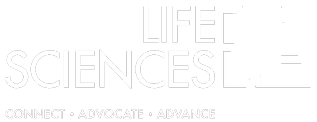Original content from United Benefit Advisors
Updated August 29, 2013
Although the employer shared responsibility requirements have been delayed to 2015, the individual responsibility requirement (also known as the individual mandate) is still scheduled to take effect in 2014. Under the individual mandate, most people residing in the U.S. will be required to have minimum essential coverage, or they will have to pay a penalty. Many individuals will be eligible for financial assistance, through premium tax credits (also known as premium subsidies), to help them purchase coverage if they buy coverage through the health insurance marketplace (also known as the exchange).
This PPACA Advisor includes information from the final regulations issued by the Internal Revenue Service on Aug. 27, 2013 and by the Department of Health and Human Services on July 1, 2013. Employers are not required to educate employees about their individual responsibilities under the Patient Protection and Affordable Care Act (PPACA) – this Advisor simply provides information that employers may find helpful to know.
The individual mandate is effective for most people as of Jan. 1, 2014. However, if the individual has access to minimum essential coverage through an employer, and that employer’s plan operates on a non-calendar year basis, the employee and/or dependent will not have to pay penalties for the months before the start of that plan year.
For 2014 the penalty for an adult is the greater of $95 or one percent of household income above the tax filing threshold
The penalty for a child under age 18 is 50 percent of the adult penalty. The maximum penalty per family is three times the individual penalty. The penalty amount increases after 2014. The penalty will be calculated and paid as part of the employee’s federal income tax filing.
Minimum Essential Coverage
To avoid a penalty a person must have “minimum essential coverage.” Minimum essential coverage is basic medical coverage, and may be provided through an employer (whether insured or self-funded, and whether provided directly by the employer or through another party, such as a multiemployer plan, a collectively bargained plan, a PEO or a staffing agency), Medicare, Medicaid, CHIP, TRICARE, some VA programs, and an individual policy (through or outside the marketplace/exchange).
While most people must obtain coverage or pay penalties, individuals will not be penalized if they do not obtain coverage and:
- They do not have access to affordable coverage (cost exceeds 8 percent of modified adjusted gross household income)
- Their household income is below the tax filing threshold
- They meet hardship criteria (e.g., recent bankruptcy, homelessness, unreimbursed expenses from natural disasters)
- Their period without coverage is less than three consecutive months
- They live outside the U.S. long enough to qualify for the foreign earned income exclusion
- They reside in a U.S. territory for at least 183 days during the year
- They are a member of a Native American Tribe
- They belong to a religious group that objects to having insurance, including Medicare and Social Security, on religious grounds (e.g., Amish)
- They belong to a health sharing ministry that has been in existence since 1999
- They are incarcerated (unless awaiting trial or sentencing)
- They are illegal aliens
If the person has access to employer-provided coverage as either the employee or an eligible dependent, affordability of the employer-provided coverage is the only factor considered.
- For the employee, coverage is unaffordable (so no penalty applies for failure to have coverage) if the cost of single coverage is more than eight percent of household income
- For a dependent, coverage is unaffordable (so no penalty applies for failure to have coverage) if the cost of the least expensive employer-provided dependent coverage is more than eight percent of household income
- If the employee and spouse both have access to coverage through their own employer, the cost for each person’s coverage is based on the cost of their own single coverage, but the totals are then combined to see if the total cost exceeds eight percent of household income
This means that there will be situations in which the employee has to pay a penalty, but family members do not. It also means that a while a low-income person could choose not to purchase coverage (and pay no penalty), he or she also has the option to purchase through the exchange and receive a premium subsidy.
If the person does not have access to employer (or other non-marketplace/exchange) coverage, the measure of unaffordability is the person’s premium after the premium subsidy is applied to the lowest cost bronze plan available through the marketplace/exchange.
Eligibility for Premium Subsidies
To help lower-income people meet the requirement to have insurance, a premium subsidy will be available to a person who:
- Purchases coverage through a public marketplace/exchange; and
- Has a household modified adjusted gross income between 100 or 133 percent (depending on their state) and 400 percent of Federal Poverty Level (FPL); and
- Is not eligible for minimum essential medical coverage through a government program such as Medicare, Medicaid or CHIP or for employer-provided coverage that both is minimum value (is expected to cover at least 60 percent of claims) and affordable (the cost of single coverage is not more than 9.5 percent of household income).
The amount of available premium subsidy depends on the person’s household income. The percentage of income a person will be expected to pay for coverage ranges from two percent for someone whose income is 100 to 133 percent of FPL to 9.5 percent for someone whose income is 300 to 400 percent of FPL. Basically, the marketplace/exchange will look at how much a specific silver (70 percent value) plan costs in the marketplace/exchange and determine how much of that cost the person should pay based on their income. The person will directly pay his or her share to the insurer and the government will pay the rest directly to the insurer.
The government payment of the premium subsidies is considered an advance tax credit, so when the person files his or her federal income tax return after the end of the year there will be a true-up, and the employee will pay extra tax (to a maximum) or get money back if the monthly subsidies/credits were too large or too small.
Individuals with incomes below 250 percent of FPL also will be eligible for help with deductibles, coinsurance and co-pays.
A person who applies for a premium subsidy will be required to provide information about coverage available through sources other than the marketplace/exchange as part of the application process. If the person says that coverage is available through his employer (or his or her spouse’s employer), the marketplace/exchange will contact the employer to verify that the employee’s information is accurate. Employers will be encouraged, but not required, to respond to these verification requests. Income will be verified through tax filings. Equifax will be used to obtain current income if that is needed. The IRS has the right to audit both the employer and individual.
Note: PPACA defines “affordability” differently based on the situation – affordability for purposes of the individual responsibility requirement is based on eight percent of household income; affordability for purposes of the premium subsidy is based on 9.5 percent of household income; and affordability for purposes of the employer shared responsibility requirement (now delayed to 2015) is based on 9.5 percent of the employee’s safe harbor income.
Noteworthy Numbers and Other Details:
The tax filing threshold is $10,000 if filing single and $20,000 if married and filing jointly.
Federal Poverty Level (FPL) in the 48 contiguous states is $11,490 for a single household and $23,550 for household of four. It is $14,350/29,440 in Alaska and $13,230/27,090 in Hawaii.
The subsidy is based on the following table (a sliding scale applies in a linear manner, rounded to the nearest one-hundredth of one percent between the minimum and maximum percentage):
| Household income as a percent of FPL |
Applicable Percentage |
| Minimum percent |
Maximum percent |
| |
|
|
| Up to 133 percent |
2.0 |
2.0 |
| 133 – 150 percent |
3.0 |
4.0 |
| 150 – 200 percent |
4.0 |
6.3 |
| 200 – 250 percent |
6.3 |
8.05 |
| 250 – 300 percent |
8.05 |
9.5 |
| 300 – 400 percent |
9.5 |
9.5 |
The applicable percentage multiplied by the person’s household income determines his required share of premiums for the second least expensive silver plan in the marketplace/exchange.
Household income generally includes the income of all individuals in the tax household (e.g., the income of employed children is considered unless the child files his/her own tax return).
The maximum amount an individual who received too large a subsidy would repay is $300 if filing single and $600 if filing other than single if household income is less than 200 percent of FPL; $750/$1,500 if income is 200 percent up to 300 percent of FPL; and $1,250/$2,500 if income is 300 – 400 percent of FPL.
Additional requirements to be eligible for the premium subsidy are that the person:
- Is a US citizen, national or alien lawfully present in the U.S. (e.g., on a visa)
- Is not eligible to be claimed as another person’s tax dependent
- Files a tax return (if married, a joint return must be filed)
- Has not purchased employer-provided coverage (regardless whether it is affordable and minimum value)
An individual who is exempt from the individual mandate because he or she does not have affordable coverage available also has the option to purchase catastrophic coverage. Premium subsidies are not available for catastrophic coverage.




